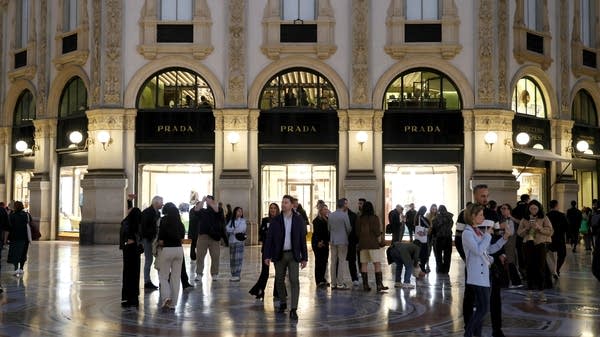How accurate are recession indicators based on culture?
People are trading recession theories online based on cultural observations. But how much can culture tell us about the economy?

Many Americans have been in a “vibecession” for a few years now, feeling economically squeezed despite all traditional indicators – inflation, the jobs report, manufacturing – mostly saying otherwise.
But with economic uncertainty growing yet again as consumer sentiment and confidence retreats, people are becoming more and more concerned that an actual recession may be on the horizon.
While economists continue to monitor traditional indicators, internet users have been making their own observations about the economy based on the state of culture.
These so-called #RecessionIndicators range from observations based on current events, such as wearing workwear everywhere or DoorDash linking with Klarna for payment plans on food, to just plain humorous – like debating on whether or not to take the rest of the liquor with you after a hang out.
Theories that link economics and culture are not new: note the lipstick effect, the hemline index or the newer recession pop phenomenon. The economy can have a big effect on culture and the way we consume it – and vice versa.
“Culture has a really powerful impact on society and the economy,” said Elizabeth Currid-Halkett, a professor at the University of Southern California, Price, and author of several books at the intersection of culture and the economy. “It’s very hard to pin down and pinpoint, but we know it to be true.”
Some cultural economic indicators have long been debunked, such as the hemline index, which emerged during the Great Depression and stated that women’s skirt lengths rise and fall with economic booms and busts, respectively. Or the movie index, which stated that people packed theaters for escapism during downturns — thanks to the rise of streaming and lingering effects of the pandemic, theaters are off to a bad start this year.
But others, like the lipstick index and men’s underwear index, still hold true. (The men’s underwear index, popularized by former Federal Reserve chairman Alan Greenspan in the 2000s, states that men’s underwear sales drop during recessions, as men are willing to wait a bit longer to buy new ones in times of economic stress.)
“Consumer items like fashion goods have always been used by economists to make a point,” said Lorynn Divita, a professor of apparel design and merchandising at Baylor University. “It takes an abstract economic concept that some people might have problems visualizing, and it uses a tangible good that we all have experience with to make the concept relatable.”
Take the lipstick index, which suggests that during economic downturns, people forgo more expensive products for small luxuries like lipstick. It was first coined by then-Estee Lauder chairman Leonard Lauder during the recession of 2001.
Divita said the lipstick index is merely an example of the substitution effect, or when the demand for a product changes because its price changes compared to other products.
“…But rather than talking about the substitution effect, which might seem kind of intangible to people, if you talk about the lipstick effect and how people will switch from large indulgences to small indulgences during times of economic duress, it suddenly makes a lot more sense,” said Divita.
The lipstick effect did not hold true during the COVID-19 pandemic, when people were wearing masks and switched to other small luxuries like mascara or nail polish. But the principle remained the same.
“There’s always a disruptor in there,” said Divita.
The economy can also influence culture in general, as shown by the recession pop phenomenon. The sudden uptick in hyper-pop-ish dance music – Charli XCX’s “Brat” album, for example – is reminding listeners of similar songs made during and following the 2008 recession, such as Kesha’s “TikTok” or the Black Eyed Peas’ creative output.
Based on his research, Joe Bennett, a forensic musicologist at Berklee College of Music, said he speculates that music is split into two groups during times of economic stress: social commentary or escapism.
“So you could say, ‘Times are hard, so let’s sing about that,’ or ‘Times are hard, so what the hell, let’s party,’” said Bennett.
Of course, this partying serves as a convenient distraction from worrying about, say, the price of eggs, or groceries in general.
While the term is linked to the economy, Bennett said it also serves as a way for people to be nostalgic about the music of their youth.
“Maybe in 2035, we’ll talk about COVID pop,” said Bennett.
Though #RecessionIndicators like recession pop are often in good fun, fears about the economy can sometimes serve as a self-fulfilling prophecy as people adjust their spending habits accordingly.
“When the market gets jittery, it’s kind of a recursive loop. It’s the same with consumers,” said Currid-Halkett. “When people get a sense of things, that there’s going to be a downturn, their behavior changes. Now is that true of everyone? Is it long standing? That remains to be seen. But I think that’s just human psychology.”







